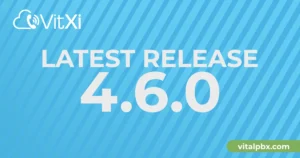Guide to Small Business Phone System PBX in 2025
For a small business, a professional and reliable communication system isn’t just a utility; it’s a powerful tool for growth, customer retention, and building a stellar brand reputation. If you’re still relying on personal mobile phones or a patchwork of basic landlines, you’re missing out on the efficiency and professionalism that a modern small business phone system PBX can provide. This guide will demystify the world of PBX systems, helping you understand what they are, the options available, and how to choose the perfect solution to elevate your business in 2025.
A Private Branch Exchange (PBX) acts as the central nervous system for your company’s telecommunications. It’s a private phone network that manages all your internal and external calls, routing them intelligently without needing a separate physical line for every single employee. By embracing a modern PBX, you unlock a suite of powerful features that were once reserved for large corporations, all while streamlining operations and often reducing costs.
What Exactly is a PBX Phone System for a Small Business?
Many small business owners hear the acronym “PBX” and imagine a tangled mess of wires in a dusty server closet. While that was once the case, the technology has evolved dramatically. Understanding this evolution is key to making an informed decision for your company’s future.
Demystifying the PBX: More Than Just a Phone Line
At its core, a PBX allows you to share a limited number of external phone lines among a larger number of internal users (extensions). For example, instead of paying for 20 separate phone lines for 20 employees, you could have 5 external lines that are shared efficiently across the entire team. The PBX handles all the complex routing automatically.
This centralized control is the magic of the system. It enables features like call transferring, extensions, conference calling, and automated greetings—all of which present a unified and professional image to your clients. It transforms a simple phone call into a structured, manageable business process.
The Evolution of the Business PBX: From Analog to IP
The game-changer for small businesses has been the shift from traditional analog PBX systems to IP PBX systems. An IP PBX uses your internet connection (Voice over Internet Protocol, or VoIP) to manage calls, rather than traditional phone lines. This unlocks incredible flexibility, significant cost savings on calls, and a host of digital features. Modern systems like VitalPBX are built on this powerful IP technology, making enterprise-grade communication accessible to everyone.
On-Premise vs. Cloud PBX: Which is Right for Your Small Business?
One of the most critical decisions you’ll make is where your PBX system will live. You can host it yourself on-site (on-premise) or have a provider host it for you in the cloud. Each approach has distinct advantages tailored to different business needs.
The On-Premise PBX: Control in Your Hands
An on-premise PBX means the physical server hardware that runs your phone system is located in your office. You own and manage the entire system.
Pros:
- Total Control: You have complete command over your system’s configuration, security, and updates.
- Long-Term Cost: After the initial hardware purchase, you avoid ongoing monthly subscription fees for the core system.
- Data Security: All your call data and configurations remain within your own network.
Cons:
- Higher Upfront Cost: Requires a significant initial investment in server hardware and potentially licenses.
- Maintenance Responsibility: Your team is responsible for all maintenance, updates, and troubleshooting.
- Requires Expertise: You need in-house or contracted IT staff with telephony knowledge.
This option is often best for businesses with an established IT department, strict data security requirements, or a preference for capital expenditures over operational ones.
The Cloud PBX (Hosted PBX): The Flexible Future
A cloud PBX, also known as a hosted PBX or UCaaS (Unified Communications as a Service), is where a third-party provider manages the entire system on their servers. You simply connect to it over the internet.
Pros:
- Low Upfront Cost: No need to buy expensive server hardware; you typically pay a predictable monthly fee per user.
- Ultimate Scalability: Easily add or remove users as your business grows or seasons change.
- Work from Anywhere: Employees can connect from any location with an internet connection using desk phones, softphones, or mobile apps.
- No Maintenance: The provider handles all updates, security, and maintenance.
Cons:
- Recurring Costs: The monthly subscription model can add up over time.
- Internet Dependant: Your phone system’s quality is entirely dependent on your internet connection’s stability.
- Less Direct Control: You rely on the provider for major configuration changes and system management.
This is the most popular choice for small businesses, startups, and companies with remote or hybrid teams due to its flexibility, low barrier to entry, and scalability.
Must-Have PBX Features for Small Businesses in 2025
A modern PBX is far more than a call director. It’s a comprehensive communications hub designed to boost productivity and enhance the customer experience. When evaluating a small business PBX phone system, look for these essential features.
Core Communication Features to Boost Professionalism
These are the foundational tools that will immediately make your business sound more established and organized.
- Auto-Attendant: This is your virtual receptionist. It greets callers with a professional message (“Thank you for calling ABC Company. For sales, press 1…”) and routes them to the correct department or person, ensuring no call gets lost.
- Call Queues: Instead of a busy signal, callers are placed in a queue with professional music on hold until an agent is available. This drastically improves the caller experience and reduces abandoned calls.
- Voicemail to Email: Receive voicemail messages as audio files directly in your email inbox. This allows you to listen and respond to messages from anywhere, without having to dial into a voicemail box.
- Ring Groups: Ring multiple phones simultaneously (e.g., the entire sales team) to ensure important calls are answered as quickly as possible.
Advanced Features for Enhanced Productivity and Collaboration
Go beyond the basics with tools that integrate communication into your daily workflows.
- CRM Integration: Connecting your PBX to your Customer Relationship Management (CRM) software is a game-changer. When a customer calls, their record can automatically pop up on your screen, giving you instant context for the conversation. This level of integration, often called Computer Telephony Integration (CTI), is a cornerstone of modern customer service.
- Video Conferencing: Integrated video conferencing allows for seamless face-to-face meetings with clients and team members without needing a separate, costly subscription service.
- Call Recording: A vital tool for training new employees, ensuring quality control, and maintaining a record of important verbal agreements.
- Softphones & Mobile Apps: Empower your team to make and receive business calls from their computer or smartphone, using their business number. This is essential for supporting remote work and travel. You can discover more about the benefits in our article about the advantages of using a softphone.
How to Choose the Best Small Business PBX System
With a clear understanding of the technology and features, you can now select the right system for your unique needs. Follow this simple, three-step process.
Step 1: Assess Your Current and Future Needs
Start by looking inward. How many employees need a phone extension right now? How many do you expect to have in two years? Consider your daily call volume and any specific needs, such as a call center queue for a support team. Choosing a system that can scale with you is crucial to avoid having to switch platforms down the line.
Step 2: Evaluate Costs: Beyond the Sticker Price
Look at the Total Cost of Ownership (TCO). For an on-premise system, this includes hardware, software licenses, installation, and ongoing maintenance. For a cloud system, it’s the monthly subscription fee, any setup fees, and potential costs for additional features. Be sure to compare apples to apples and understand what is included in each package.
Step 3: Prioritize Security and Reliability
Your phone system is a critical business tool; it must be secure and reliable. For on-premise solutions, ensure you have a plan for backups and system security. For cloud solutions, ask the provider about their uptime guarantee (look for 99.99% or higher) and their security protocols, such as call encryption (SRTP/TLS). Strong security is non-negotiable, a fact consistently highlighted by cybersecurity experts at organizations like the Cybersecurity and Infrastructure Security Agency (CISA).
Frequently Asked Questions About Small Business PBX Systems
Q: Do small businesses still need a PBX in 2025?
A: Absolutely. A PBX is more critical than ever. It provides the professional features, flexibility, and scalability that small businesses need to compete with larger companies. Relying on personal mobile numbers appears unprofessional and offers no central management or advanced features like call routing or auto-attendants.
Q: What is the difference between a PBX and standard VoIP?
A: VoIP (Voice over Internet Protocol) is the technology that transmits voice calls over the internet. A PBX is the system—the “brain”—that uses VoIP technology to manage and route those calls. You can have a basic VoIP service without a PBX, but you won’t have features like extensions, transfers, or call queues. An IP PBX combines the power of a PBX with the cost-efficiency of VoIP.
Q: How much does a PBX system cost for a small business?
A: Costs vary widely. A cloud-based PBX can start from as little as $15-$30 per user per month. An on-premise solution can have an initial cost of several thousand dollars for the hardware and software, but with lower ongoing fees. The final cost depends on the number of users, required features, and chosen deployment model.
Q: Is a cloud PBX better for small businesses?
A: For most small businesses, yes. The low upfront cost, scalability, and lack of maintenance make cloud PBX the most accessible and flexible option. It allows small businesses to get enterprise-grade features on a small business budget and easily adapt as the company grows.
Empower Your Business with the Right PBX System
Choosing a new phone system is a major step, but it’s an investment that pays dividends in productivity, professionalism, and customer satisfaction. A modern small business phone system PBX breaks down communication barriers, empowers remote teams, and provides the polished image you need to grow your brand. Whether you opt for the complete control of an on-premise solution or the effortless flexibility of the cloud, the right PBX will become an invaluable asset to your daily operations.
Ready to revolutionize your business communication? Discover the power and flexibility of VitalPBX. Our platform offers a robust, feature-rich solution that can be deployed on-premise or in the cloud, scaling perfectly to meet your business’s unique needs.
Download our free version today and experience the future of the small business phone system PBX!




